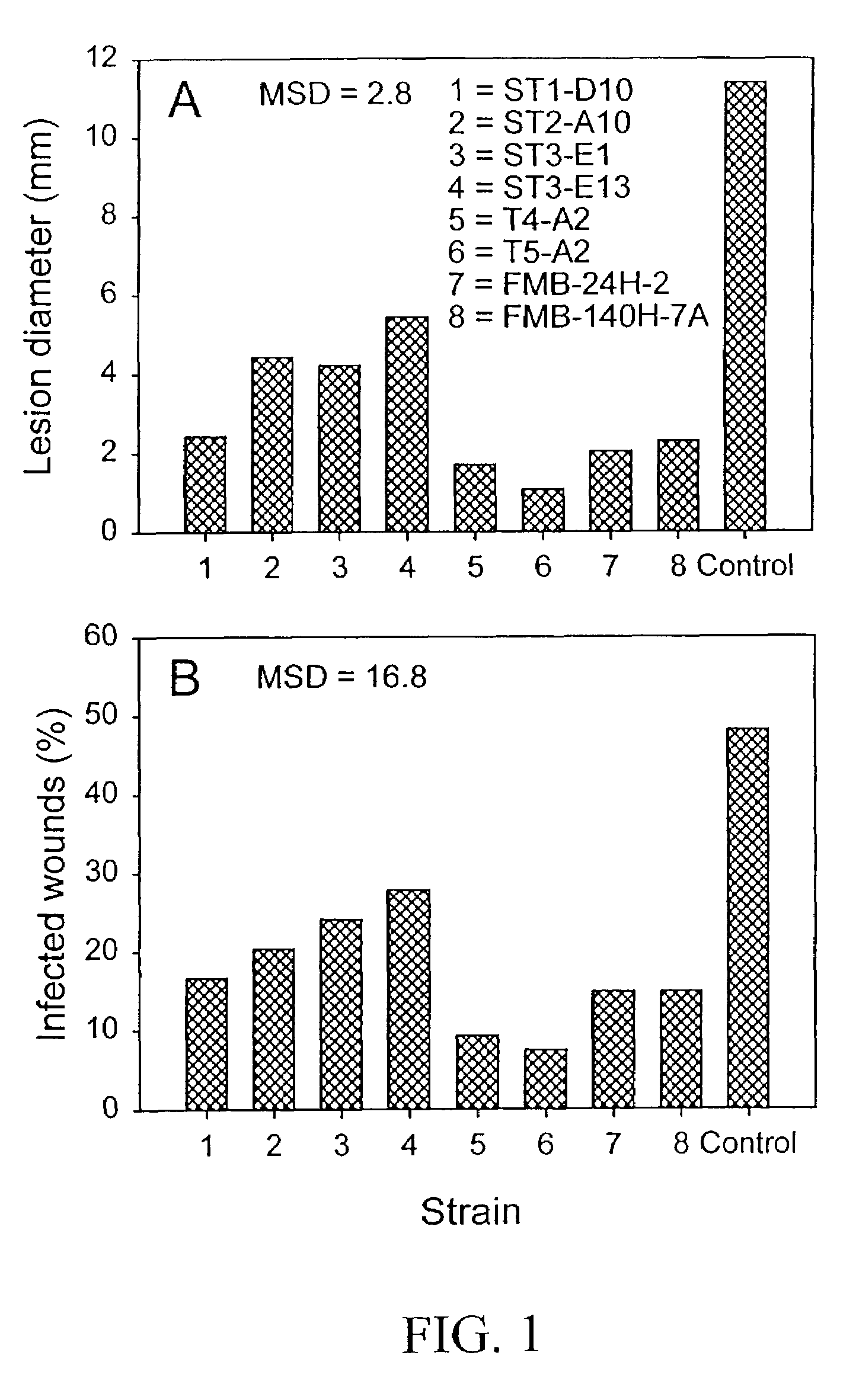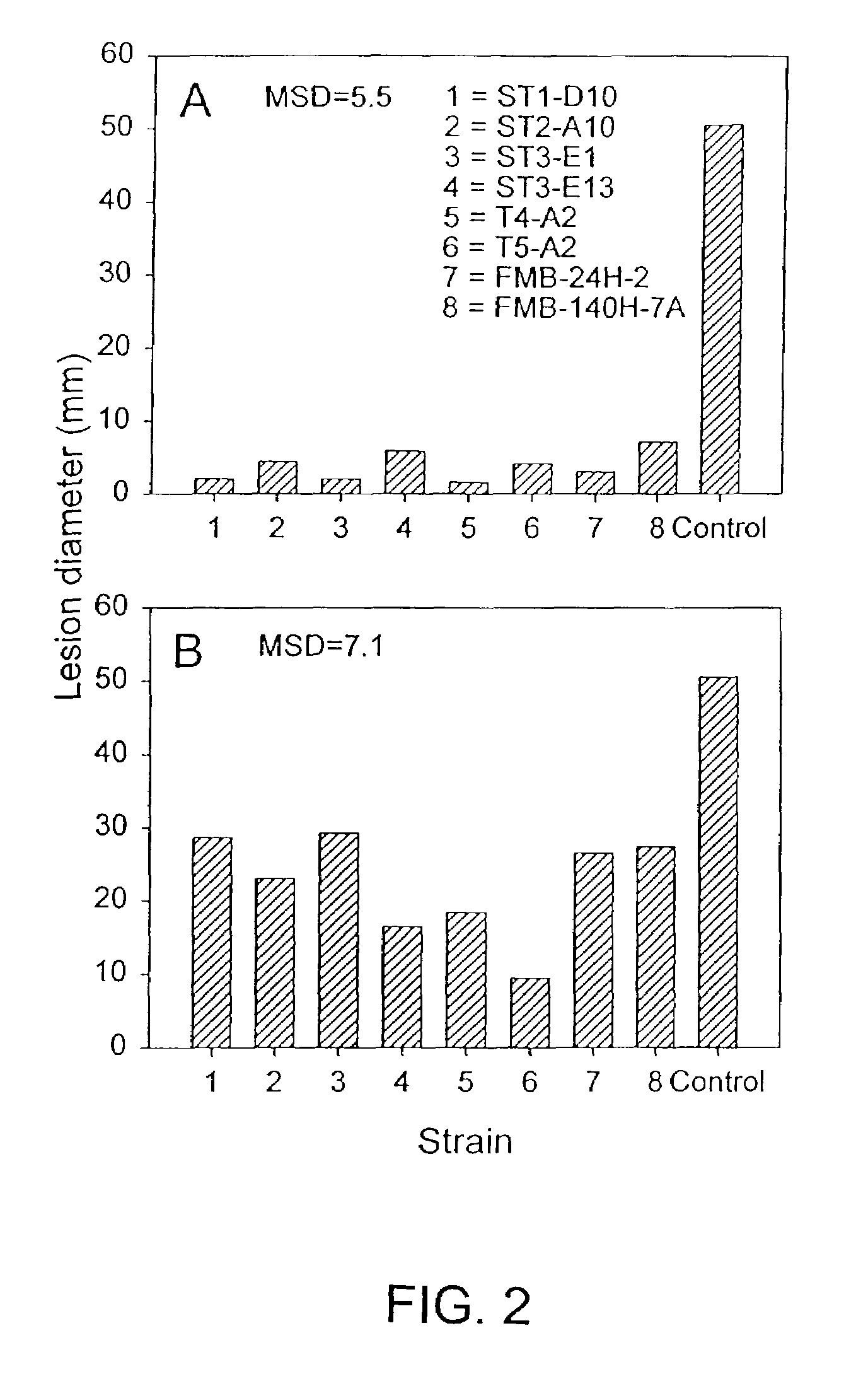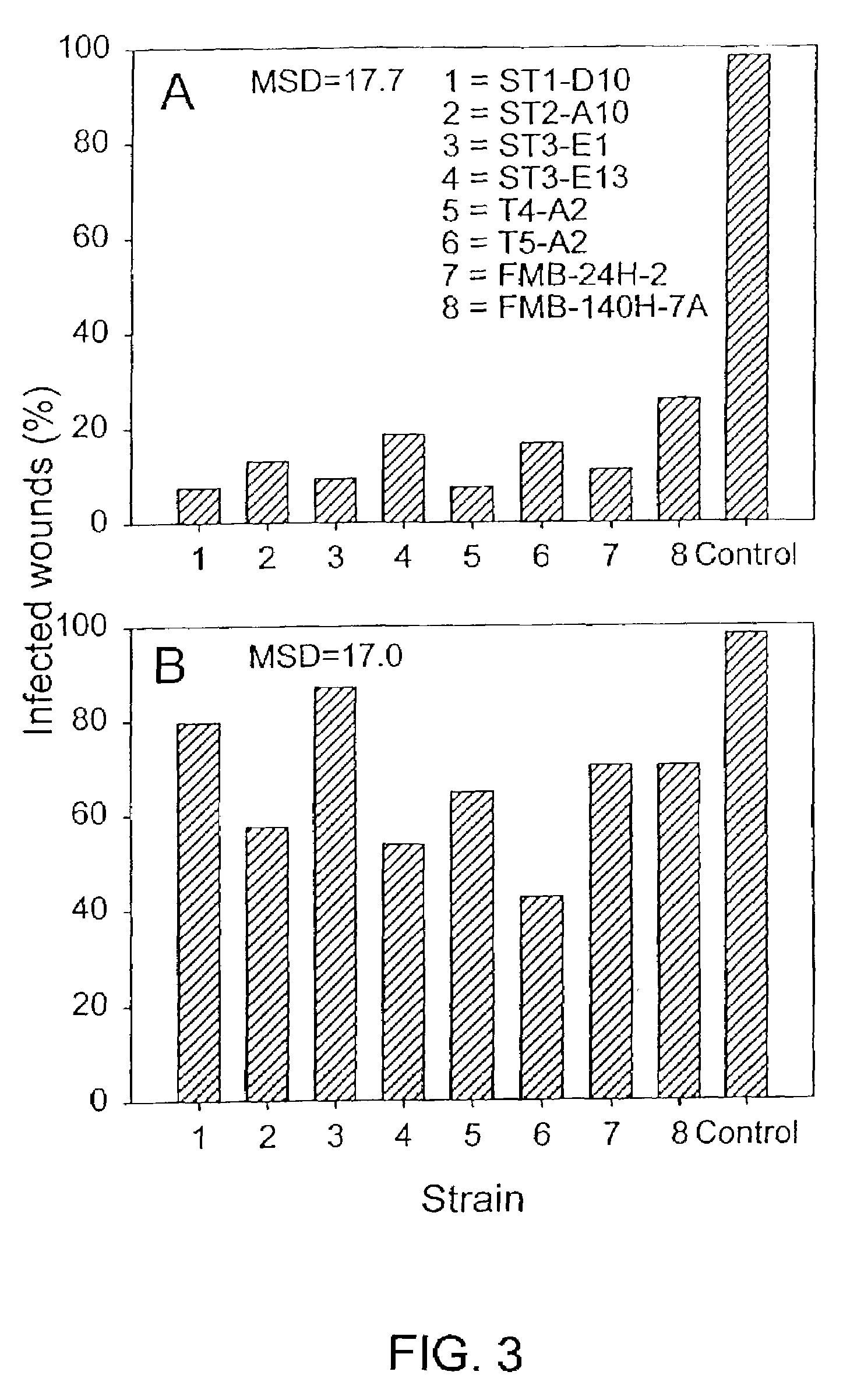Biological control of postharvest decay of fruit using strains of Metschnikowia species
- Summary
- Abstract
- Description
- Claims
- Application Information
AI Technical Summary
Benefits of technology
Problems solved by technology
Method used
Image
Examples
example 1
Isolation of Microorganisms
[0044]Microorganisms were isolated from wounds of artificially wounded ‘Golden Delicious’ or ‘Red Delicious’ (Malus domestica, Burk.) apples from 6 to 10 year-old unmanaged apple orchard trees planted to ‘Golden Delicious’, ‘Red Delicious’, ‘Empire’, ‘Stayman’ and ‘York’ at the Appalachian Fruit Research Station in Kearneysville, W. Va. as described by (Janisiewicz, W. J., 1996, supra) with a few modifications. Apples were collected from the orchard in three different years. Briefly, ‘Golden Delicious’ apples were wounded by removing the skin in an area of approximately 3 cm2 and 2 mm deep at weekly intervals starting five weeks before harvest in the first year, and only once 4 weeks before harvest in the second year. In the third year, ‘Red Delicious’ apples were wounded one week before harvest. The wounded areas on fruits were removed for isolation of microorganisms with a cork borer (1 cm diameter×1 cm deep) one week after each wounding in the first yea...
example 2
Pathogen and Antagonists
[0045]The pathogen used was a very aggressive isolate of P. expansum (MD-8) from a collection which was previously isolated from a decayed apple in storage. It was maintained on potato-dextrose-agar (PDA), and continued virulence was assured by periodic transfers through apple. A conidial suspension (5×104 conidia / ml) was used for fruit inoculations as described by (Janisiewicz and Marchi, supra).
[0046]Suspensions of the M. pulcherrima strains for fruit inoculation and nutrient utilization tests were prepared as described by (Janisiewicz and Marchi, supra). Briefly, the yeasts were grown in 50 ml of NYDB medium in 250 ml Erlenmeyer flasks on a rotary shaker at 150 rpm at 26° C. Following incubation for 24 hr, the cells were harvested by centrifugation at 7000 gn for 10 min, resuspended in water and adjusted to a concentration 1.6×107 CFU / ml with a spectrophotometer at 420 nm. For the second biocontrol experiment, additional concentration adjustments were perf...
example 3
Antagonist Selection and Upscale Biocontrol Tests
[0047]The biocontrol potential of the isolated microorganisms against P. expansum was determined in primary and secondary screenings on ‘Golden Delicious’ apples (24). Eight yeast strains, which came from the three types of isolation procedures in three different years, and identified as M. pulcherrima by Centraalbureau Voor Schimmelcultures, Delft, the Netherlands, were selected for upscale biocontrol tests on ‘Golden Delicious’ apple. The selected yeasts included strains: T4-A2 and T5-A2 from the first-year isolation; ST1-D10, ST2-A10, ST3-E1 and ST3-E13 from the second-year isolation; and FMB-24H-2 and FMB-140H-7A from the third-year isolation.
[0048]In the first test, very mature apples stored for eight months in air storage at 1° C. were removed from storage, washed, dried, placed on fruit tray packs and equilibrated to room temperature overnight. The next day the fruit were wounded midway along the calyx-stem end axis with a stan...
PUM
 Login to View More
Login to View More Abstract
Description
Claims
Application Information
 Login to View More
Login to View More - R&D
- Intellectual Property
- Life Sciences
- Materials
- Tech Scout
- Unparalleled Data Quality
- Higher Quality Content
- 60% Fewer Hallucinations
Browse by: Latest US Patents, China's latest patents, Technical Efficacy Thesaurus, Application Domain, Technology Topic, Popular Technical Reports.
© 2025 PatSnap. All rights reserved.Legal|Privacy policy|Modern Slavery Act Transparency Statement|Sitemap|About US| Contact US: help@patsnap.com



